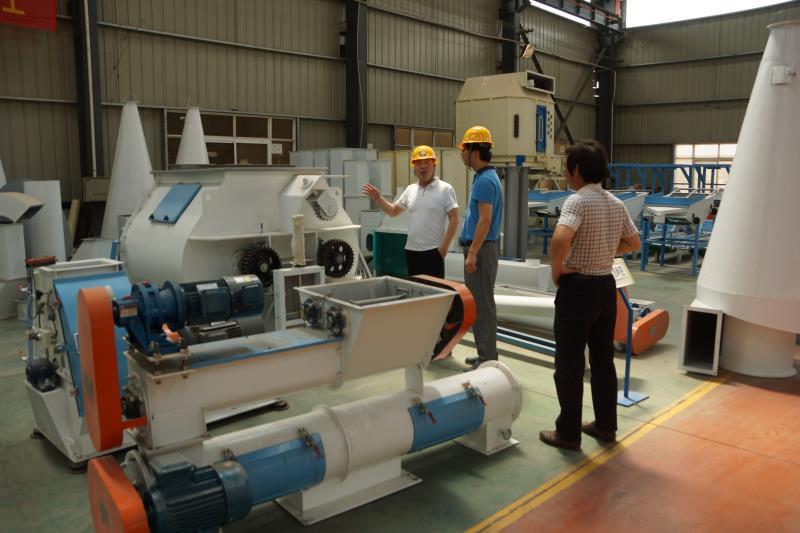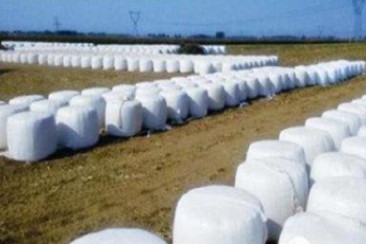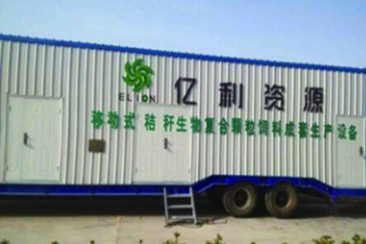Introduction
-
The process flow of compound fertilizer production line can usually be divided into: raw material batching → raw material stirring → raw material granulation → particle drying → particle cooling → particle classification → finished product coating → finished product packaging
-
The compound fertilizer production line has less investment, quick return on cost and good economic benefits. The complete set of equipment has a compact layout, scientific and reasonable, and no three wastes are discharged.
Stable operation, reliable operation and convenient maintenance. Wide adaptability of raw materials, suitable for various raw materials such as compound fertilizer, medicine, chemical industry, feed, etc.
The granulation of the material is high, and the granulation rate of the product is high. Can produce various concentrations, various types (including organic fertilizer, inorganic fertilizer, biological fertilizer, magnetic fertilizeretc.) compound fertilizer.
-
Compound fertilizer production line process
1. Raw material ingredients: urea, ammonium nitrate, ammonium chloride, ammonium sulfate, ammonium phosphate (monoammonium phosphate, diammonium phosphate, heavy calcium, general calcium), potassium chloride (potassium sulfate) and other raw materials are prepared in a certain proportion (according to market demand and local soil test results).
2. Raw material mixing: Mix the prepared raw materials evenly to improve the overall uniform fertilizer content of the fertilizer particles.
3. Raw material granulation: The uniformly stirred raw material is sent to a granulator for granulation (a rotary drum granulator or an extrusion granulator can also be used).
4. Granule drying: The granules made by the granulator are sent to the dryer to dry the moisture contained in the granules to increase the strength of the granules and facilitate storage.
5. Particle cooling: The temperature of the dried fertilizer particles is too high, and it is easy to agglomerate. After cooling, it is convenient for bagging, storage and transportation.
6. Particle classification: the cooled particles are classified, the unqualified particles are re-granulated by pulverization, and the qualified products are screened out.
7. Finished film: coating qualified products to increase the brightness and roundness of the particles.
8. Finished product packaging: Put the film-coated particles, that is, the finished product, in a bag and store it in a ventilated place. -
Equal and balanced product particle nutrients
Because it is chemical synthesis granulation, the nutrient content of the granular fertilizer is the same as the label.
It can provide ammonia, phosphorus, potassium and other nutrients to crops at the same time in a certain proportion to ensure the balanced growth of crops.
The product has good physical properties and the particle size distribution of the product is uniform, 90% of which are particles with a particle size of 2-4 mm; high particle strength,
Good fluidity, not easily broken during transportation, storage and stacking. The design integrates foreign advanced technology to further optimize
device design performance.For more product details: please call 15993745555
Finished pellets
undefined
Features
-
- Commodity name: Compound fertilizer production line and detailed text
The process flow of compound fertilizer production line can usually be divided into: raw material batching → raw material stirring → raw material granulation → particle drying → particle cooling → particle classification → finished product coating → finished product packaging
-
The compound fertilizer production line has less investment, quick return on cost and good economic benefits. The complete set of equipment has a compact layout, scientific and reasonable, and no three wastes are discharged.
Stable operation, reliable operation and convenient maintenance. Wide adaptability of raw materials, suitable for various raw materials such as compound fertilizer, medicine, chemical industry, feed, etc.
The granulation of the material is high, and the granulation rate of the product is high. Can produce various concentrations, various types (including organic fertilizer, inorganic fertilizer, biological fertilizer, magnetic fertilizeretc.) compound fertilizer.
-
Compound fertilizer production line process
1. Raw material ingredients: urea, ammonium nitrate, ammonium chloride, ammonium sulfate, ammonium phosphate (monoammonium phosphate, diammonium phosphate, heavy calcium, general calcium), potassium chloride (potassium sulfate) and other raw materials are prepared in a certain proportion (according to market demand and local soil test results).
2. Raw material mixing: Mix the prepared raw materials evenly to improve the overall uniform fertilizer content of the fertilizer particles.
3. Raw material granulation: The uniformly stirred raw material is sent to a granulator for granulation (a rotary drum granulator or an extrusion granulator can also be used).
4. Granule drying: The granules made by the granulator are sent to the dryer to dry the moisture contained in the granules to increase the strength of the granules and facilitate storage.
5. Particle cooling: The temperature of the dried fertilizer particles is too high, and it is easy to agglomerate. After cooling, it is convenient for bagging, storage and transportation.
6. Particle classification: the cooled particles are classified, the unqualified particles are re-granulated by pulverization, and the qualified products are screened out.
7. Finished film: coating qualified products to increase the brightness and roundness of the particles.
8. Finished product packaging: Put the film-coated particles, that is, the finished product, in a bag and store it in a ventilated place. -
Equal and balanced product particle nutrients
Because it is chemical synthesis granulation, the nutrient content of the granular fertilizer is the same as the label.
It can provide ammonia, phosphorus, potassium and other nutrients to crops at the same time in a certain proportion to ensure the balanced growth of crops.
The product has good physical properties and the particle size distribution of the product is uniform, 90% of which are particles with a particle size of 2-4 mm; high particle strength,
Good fluidity, not easily broken during transportation, storage and stacking. The design integrates foreign advanced technology to further optimize
device design performance.For more product details: please call 15993745555
Working Principle
-
- Commodity name: Compound fertilizer production line and detailed text
The process flow of compound fertilizer production line can usually be divided into: raw material batching → raw material stirring → raw material granulation → particle drying → particle cooling → particle classification → finished product coating → finished product packaging
-
The compound fertilizer production line has less investment, quick return on cost and good economic benefits. The complete set of equipment has a compact layout, scientific and reasonable, and no three wastes are discharged.
Stable operation, reliable operation and convenient maintenance. Wide adaptability of raw materials, suitable for various raw materials such as compound fertilizer, medicine, chemical industry, feed, etc.
The granulation of the material is high, and the granulation rate of the product is high. Can produce various concentrations, various types (including organic fertilizer, inorganic fertilizer, biological fertilizer, magnetic fertilizeretc.) compound fertilizer.
-
Compound fertilizer production line process
1. Raw material ingredients: urea, ammonium nitrate, ammonium chloride, ammonium sulfate, ammonium phosphate (monoammonium phosphate, diammonium phosphate, heavy calcium, general calcium), potassium chloride (potassium sulfate) and other raw materials are prepared in a certain proportion (according to market demand and local soil test results).
2. Raw material mixing: Mix the prepared raw materials evenly to improve the overall uniform fertilizer content of the fertilizer particles.
3. Raw material granulation: The uniformly stirred raw material is sent to a granulator for granulation (a rotary drum granulator or an extrusion granulator can also be used).
4. Granule drying: The granules made by the granulator are sent to the dryer to dry the moisture contained in the granules to increase the strength of the granules and facilitate storage.
5. Particle cooling: The temperature of the dried fertilizer particles is too high, and it is easy to agglomerate. After cooling, it is convenient for bagging, storage and transportation.
6. Particle classification: the cooled particles are classified, the unqualified particles are re-granulated by pulverization, and the qualified products are screened out.
7. Finished film: coating qualified products to increase the brightness and roundness of the particles.
8. Finished product packaging: Put the film-coated particles, that is, the finished product, in a bag and store it in a ventilated place. -
Equal and balanced product particle nutrients
Because it is chemical synthesis granulation, the nutrient content of the granular fertilizer is the same as the label.
It can provide ammonia, phosphorus, potassium and other nutrients to crops at the same time in a certain proportion to ensure the balanced growth of crops.
The product has good physical properties and the particle size distribution of the product is uniform, 90% of which are particles with a particle size of 2-4 mm; high particle strength,
Good fluidity, not easily broken during transportation, storage and stacking. The design integrates foreign advanced technology to further optimize
device design performance.For more product details: please call 15993745555
Technical parameters
-
- Commodity name: Compound fertilizer production line and detailed text
The process flow of compound fertilizer production line can usually be divided into: raw material batching → raw material stirring → raw material granulation → particle drying → particle cooling → particle classification → finished product coating → finished product packaging
-
The compound fertilizer production line has less investment, quick return on cost and good economic benefits. The complete set of equipment has a compact layout, scientific and reasonable, and no three wastes are discharged.
Stable operation, reliable operation and convenient maintenance. Wide adaptability of raw materials, suitable for various raw materials such as compound fertilizer, medicine, chemical industry, feed, etc.
The granulation of the material is high, and the granulation rate of the product is high. Can produce various concentrations, various types (including organic fertilizer, inorganic fertilizer, biological fertilizer, magnetic fertilizeretc.) compound fertilizer.
-
Compound fertilizer production line process
1. Raw material ingredients: urea, ammonium nitrate, ammonium chloride, ammonium sulfate, ammonium phosphate (monoammonium phosphate, diammonium phosphate, heavy calcium, general calcium), potassium chloride (potassium sulfate) and other raw materials are prepared in a certain proportion (according to market demand and local soil test results).
2. Raw material mixing: Mix the prepared raw materials evenly to improve the overall uniform fertilizer content of the fertilizer particles.
3. Raw material granulation: The uniformly stirred raw material is sent to a granulator for granulation (a rotary drum granulator or an extrusion granulator can also be used).
4. Granule drying: The granules made by the granulator are sent to the dryer to dry the moisture contained in the granules to increase the strength of the granules and facilitate storage.
5. Particle cooling: The temperature of the dried fertilizer particles is too high, and it is easy to agglomerate. After cooling, it is convenient for bagging, storage and transportation.
6. Particle classification: the cooled particles are classified, the unqualified particles are re-granulated by pulverization, and the qualified products are screened out.
7. Finished film: coating qualified products to increase the brightness and roundness of the particles.
8. Finished product packaging: Put the film-coated particles, that is, the finished product, in a bag and store it in a ventilated place. -
Equal and balanced product particle nutrients
Because it is chemical synthesis granulation, the nutrient content of the granular fertilizer is the same as the label.
It can provide ammonia, phosphorus, potassium and other nutrients to crops at the same time in a certain proportion to ensure the balanced growth of crops.
The product has good physical properties and the particle size distribution of the product is uniform, 90% of which are particles with a particle size of 2-4 mm; high particle strength,
Good fluidity, not easily broken during transportation, storage and stacking. The design integrates foreign advanced technology to further optimize
device design performance.For more product details: please call 15993745555

Tel:
Related Equipment

Organic fertilizer production line

Slag name

Organic fertilizer and detailed text

Water soluble fertilizer
Inquiry







